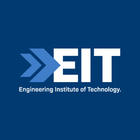Professional Certificate of Competency in Substation Design (Control, Protection and Facility Planning)
Professional Certificate of Competency in Substation Design (Control, Protection and Facility Planning)
This professional development course is designed for engineers and technicians who need to gain practical skills and knowledge in the control, protection, and facility planning systems within substation design. Course Details Substations are critical assets in any power system and serve as important nodes in a transmission and distribution network….
Categories
COURSE DESCRIPTION
This professional development course is designed for engineers and technicians who need to gain practical skills and knowledge in the control, protection, and facility planning systems within substation design.
Course Details
Substations are critical assets in any power system and serve as important nodes in a transmission and distribution network. Substations, therefore, handle multiple voltages in a given location and link two or more systems of different voltages.
This course will focus on subsystems that perform essential functions in substations. These include earthing and grounding, lightning protection of outdoor equipment and substation buildings, power system protection, control, and interlocking equipment, including the auxiliary power sources and various switchyard facilities. These include foundation, structures, cable routing, lighting, fire protection and surveillance equipment.
Earthing of a high voltage switchyard requires careful design, as it has a direct bearing on safety. The design approach to switchyards will be discussed, and the basic methods of calculation will be outlined. Lightning is a common threat to substation equipment and supply reliability, as overvoltage surges can result in insulation failure or spark over. While lightning cannot be prevented, its effects can be minimized by proper lightning and surge protection measures.
Any electrical equipment is susceptible to insulation failures. Protection against such failures and the resulting short circuits is a vital need in power systems. The various protection options available to the designer and the protection of bus-bars, transformers, and substation feeders will be discussed.
Another essential system is the control of switchyard equipment and the required auxiliary power supply. AC auxiliary power is used for the operation of isolators and disconnectors, the operating mechanism of circuit breakers, and substation lighting. The essential functions are powered through DC supply backed with batteries for reliability. This includes control, annunciation and protection functions, breaker close and trip commands, and in some cases, emergency lighting.
A switchyard has to be adequately planned by preparing the site, measuring earth resistivity required for earthing design and optimization, earthwork, foundations, cable trenches inside the switchyard, draining arrangements, etc. These aspects will be covered in detail during the course. We will also discuss gas-insulated switchgear as an alternative to outdoor open type switchyards.
This course will also cover selecting and applying appropriate power system protection to protect equipment and personnel from abnormal system conditions, including short circuits and earth faults.
REQUIREMENTS
For entry into most EIT degree programs, you need to have completed a minimum level of education similar to successful completion of Australian Year 12 with good grades.
EDUCATIONAL INSTITUTION
The Engineering Institute of Technology (EIT) delivers industry driven programs to equip its students with the skills required in the real industrial world. Its study options are available across Perth and Melbourne; and include classroom sessions, practical lab exercises, assessments, class discussions and self-study. Additionally, students enjoy access to industry experts based around the globe through live and interactive online presentations. All EIT programs provide access to remote laboratories and cutting-edge simulation software. Hands-on laboratory practicals are an essential component of EIT’s programs to ensure students put theory into practice. These hands-on workshops cover the major discipline-specific applied skills required for competency in engineering practice.




